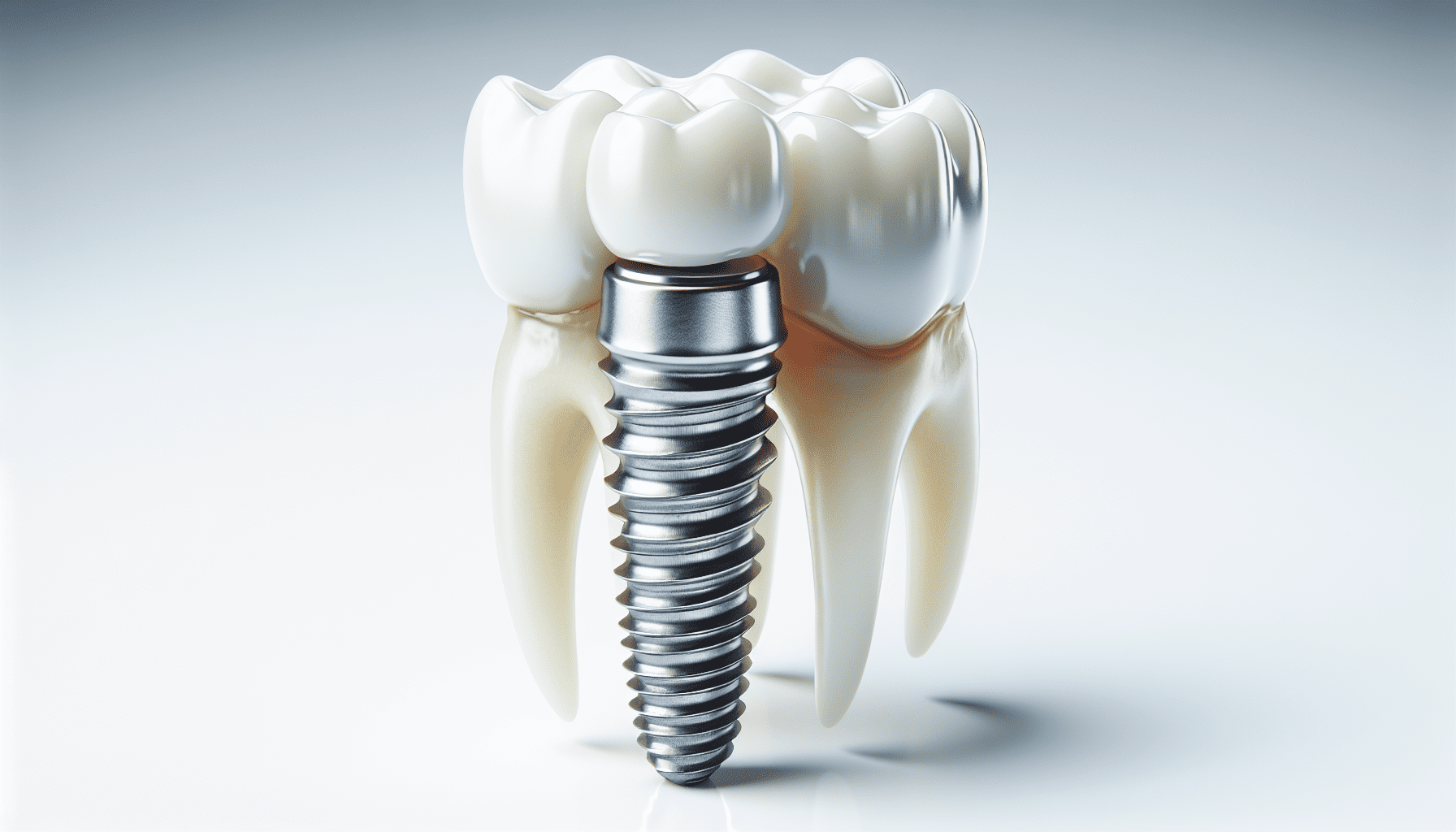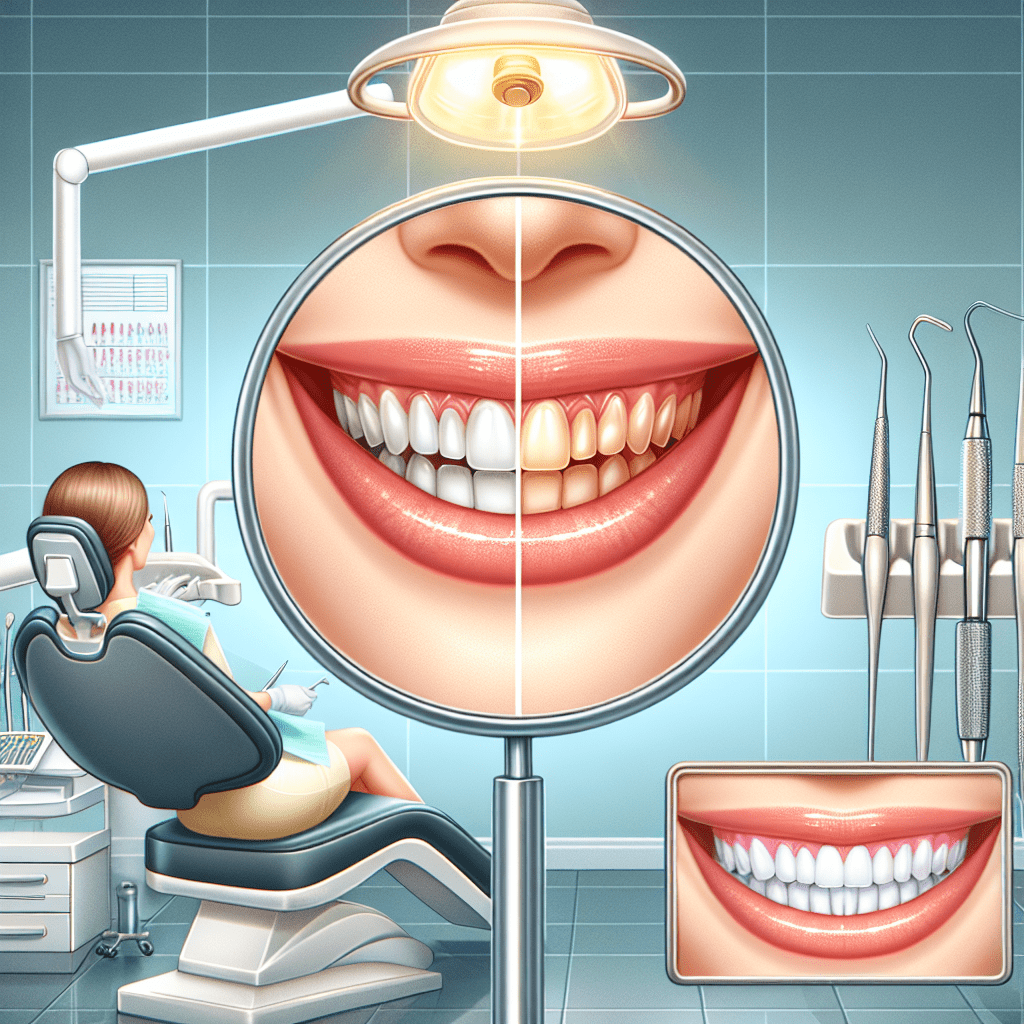Imagine flashing a confident smile, one that’s complete with a full set of pearly whites. With dental implants, this can be your new reality! This incredible advancement in dental technology offers a permanent solution for missing teeth, seamlessly blending with your natural smile. Your days of feeling self-conscious about gaps in your teeth could be over as dental implants provide a sturdy, long-lasting option that not only looks but also feels like your very own teeth. Whether it’s due to an accident or natural causes, losing teeth no longer means losing your self-esteem. Dive into the world of dental implants and discover how they can restore more than just your smile—they can revitalize your zest for life.
Understanding Dental Implants
Definition and overview
Dental implants are a modern and highly effective solution for replacing missing teeth. Unlike dentures or bridges, which rest on the gum’s surface, implants are anchored into the jawbone, providing a sturdy and permanent base for artificial teeth. This dental technology has revolutionized the way people deal with tooth loss, offering a solution that not only feels but also functions much like natural teeth.
The components of a dental implant
A dental implant consists of three key components: the implant post, the abutment, and the prosthesis (crown). The implant post is usually made of titanium and resembles a small screw. It’s surgically inserted into your jawbone, acting as a root for the new tooth. Once you’ve healed, an abutment is attached to the post above the gum line. This serves as a connector for the crown, which is the visible part of the implant designed to look like your natural teeth.
How implants mimic natural teeth
Dental implants are the closest you can get to healthy, natural teeth. They allow you to eat, smile, laugh, talk, and enjoy daily activities without thinking about your teeth. Implants are designed to mimic the entire structure of natural teeth, with a strong foundation in the jawbone just like roots, ensuring stability and preventing bone loss. The crown is tailored to match the color and shape of your surrounding teeth, leading to a natural, seamless appearance.
The Advantages of Dental Implants
Longevity and durability
When it comes to replacing missing teeth, you want a solution that lasts. One of the most significant advantages of dental implants is their longevity and durability. With proper care and maintenance, implants can last a lifetime. The titanium post integrates with the jawbone in a process called osseointegration, creating a durable and permanent foundation.
Improved oral health
Dental implants have a positive impact on your overall oral health. Since they don’t require reducing other teeth like a dental bridge might, more of your natural teeth are left intact, which is beneficial in the long term. Implants also prevent bone deterioration and stimulate bone growth, preserving the natural contours of your face.
Enhanced appearance and self-esteem
Missing teeth can make you feel self-conscious about your smile. Dental implants look and feel like your own teeth, and because they are designed to fuse with bone, they become permanent. This can greatly enhance your appearance and boost your self-esteem, as you’ll have a full smile to show off once again.
Restoration of chewing and speech
Implants restore your ability to chew and speak properly. Unlike dentures that can slip within your mouth and cause slurred speech or difficulty eating, implants function just like your own teeth. You can eat your favorite foods with confidence and without discomfort.
Are You a Candidate for Dental Implants?
Assessment of oral health
To determine if you’re a candidate for dental implants, your dental provider will conduct a thorough assessment of your oral health. This includes examining your gums, remaining teeth, and jawbone density to ensure they can support the implant. You need to be free of periodontal disease and have adequate oral hygiene practices to proceed with the implantation.
Bone density requirements
A key factor in determining your eligibility for dental implants is whether you have enough bone density in your jaw. The implant needs a certain amount of bone to hold it in place. If your bone is too thin or soft, you may require a bone graft before the implant can be placed.
Lifestyle and habits affecting eligibility
Your lifestyle and habits can influence your suitability for dental implants. Smoking, for example, can significantly affect the healing process post-surgery, potentially leading to complications or implant failure. Discussing your lifestyle choices and medical history with your dentist will help determine the best course of action.
Comparing Implants to Other Dental Prosthetics
Dentures vs. implants
Dentures are a more temporary solution and can be removed for cleaning or sleeping. They can sometimes slip or cause discomfort, which can affect eating and speech. Implants, on the other hand, are fixed in place and offer greater stability and comfort.
Bridge work vs. implants
Bridges are another alternative to replace missing teeth. Unlike implants, they rely on neighboring teeth for support, which requires altering these teeth. Bridges can also be challenging to clean under and may need to be replaced every 5 to 15 years. Implants do not affect adjacent teeth and can last a lifetime with proper care.
The cost-benefit analysis over time
Initially, dental implants may seem more expensive than other tooth replacement options. However, considering their durability, functionality, appearance, and the fact that they can last a lifetime, they often present a more cost-effective solution in the long run.
The Dental Implant Procedure
Initial consultation and planning
Your journey toward dental implants begins with an initial consultation. Your dentist will discuss your medical history, take scans of your mouth, and create a personalized treatment plan. Planning is critical to ensure that the implant will be precisely positioned for optimal function and esthetics.
The surgical process
The surgical process of placing an implant involves numbing the area, making an incision in the gum, and inserting the titanium post into the jawbone. The area is then allowed to heal, with the post fusing to the bone in a process known as osseointegration.
Healing and osseointegration
Healing and osseointegration are crucial phases after the implant has been placed. This could take several months, during which the implant becomes securely attached to the jawbone. Patience is key during this period to ensure the best outcome.
Placement of the abutment and crown
Once osseointegration is complete, you’ll return to have the abutment placed on the implant. After the gums heal around the abutment, which usually takes a few weeks, the crown is attached. The crown is custom-made to match your natural teeth and fit perfectly in your mouth.
Post-Surgical Care for Dental Implants
Immediate aftercare instructions
Following surgery, it’s important to follow your dentist’s aftercare instructions diligently. This includes eating soft foods, avoiding strenuous activity, and keeping the implant site clean. You may experience some swelling, bruising, or discomfort, which is normal and can be managed with pain medication if necessary.
Long-term maintenance
Long-term maintenance of your dental implants is similar to caring for your natural teeth. Regular brushing, flossing, and dental check-ups are essential to maintaining the health of your implants and surrounding gums.
Dealing with potential complications
While complications are rare, they can occur. Issues like infection, implant loosening, or gum recession should be addressed promptly by your dentist to ensure the longevity of your implant.
Technological Advancements in Dental Implants
3D imaging and planning
The use of 3D imaging and computer-assisted planning has greatly improved the precision of dental implant procedures. This technology allows for more accurate placement and minimizes risks, leading to better outcomes and patient satisfaction.
Material innovations
Recent innovations in materials, such as the development of zirconia implants, offer an alternative to titanium. These new materials can provide benefits such as improved esthetics and decreased risk of allergic reactions.
Minimally invasive techniques
The shift toward minimally invasive surgical techniques has made the process of getting dental implants less daunting for patients. These advancements can reduce discomfort and speed up healing times.
Understanding the Cost of Dental Implants
Factors affecting the cost
The cost of dental implants can vary based on several factors, including the number of implants needed, the type of implants and materials used, and the need for additional procedures such as bone grafting or sinus lifts.
Insurance and financing options
While dental insurance may not always cover dental implants, some insurance plans do include them as part of their benefits. There are also various financing and payment options available to help manage the cost of the treatment.
The investment in comparison to benefits
When considering the cost, it’s important to weigh the investment against the benefits. Dental implants provide a long-term solution that can improve quality of life, oral health, and overall well-being, making them a worthwhile investment for many patients.
Real Patient Experiences with Dental Implants
Before and after scenarios
Seeing the transformation that occurs before and after dental implant surgery can be quite remarkable. Patients often report not only an improved appearance but also a new level of comfort and confidence in their everyday lives.
Testimonials and personal stories
Testimonials and personal stories can provide insight into the real-life impact of dental implants. Hearing from others who have gone through the process can be reassuring and helpful when considering this option for yourself.
Recovery and lifestyle impact
The recovery process is usually straightforward, and most patients can resume normal activities within a few days. The impact on lifestyle is overwhelmingly positive, with many experiencing a newfound ability to enjoy foods, social situations, and a worry-free smile.
The Future of Dental Implants
Innovations on the horizon
Continuous research in the field of dental implants promises future innovations that could make the procedure even more effective and accessible. This includes new implant designs that promote faster healing and methods that make the procedure available to a wider range of patients.
The role of stem cells and regenerative medicine
The role of stem cells and regenerative medicine is an exciting area of development in dental care. There’s hope that these advances may one day allow for the regrowth of a patient’s own teeth using implant technology as a guide.
Improvement in patient accessibility
As technology evolves and becomes more cost-effective, and as insurance coverage for dental implants improves, these life-changing procedures are expected to become more accessible to a broader population in need of tooth replacement solutions.


